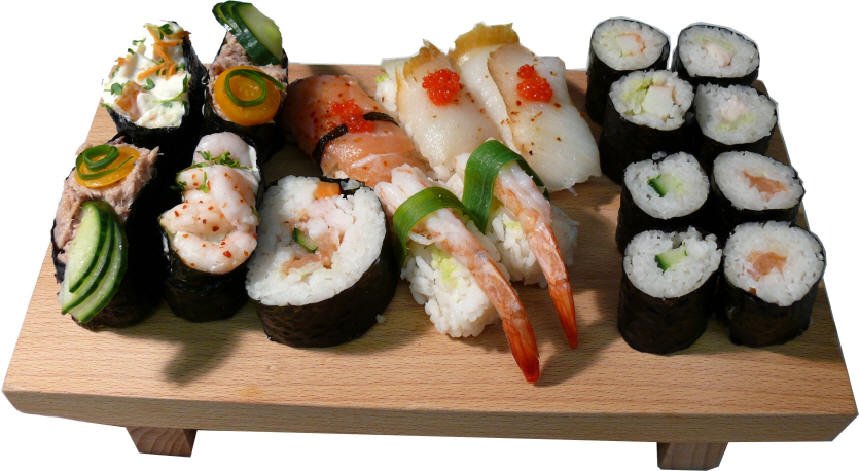
Many of us believe eating sushi is a good way to get the recommended two portions of fish each week, but most of the products on the market contain very little protein.
The main reason for sushi surge in popularity is its reputation as a healthy meal. Japanese women are among the healthiest in the world, while slender celebrities are all fans of the raw fish dish.
But do sushi’s nutrition credentials – especially the Western version – stack up?
Not always, according to British dietitian Rachel Beller. In her book Eat To Lose, Eat To Win, Rachel Beller says a “light lunch” of sushi may mean you overdose on calories and carbohydrates.
“A typical sushi roll contains 290 to 350 calories and has the carbohydrate equivalent of two-and-a-half to four slices of bread,” she says.
“So a California roll (round rolled sushi, containing a small piece of fish and avocado plus fatty mayonnaise) equals two sandwiches filled with crab sticks (processed fish that is flavored and colored to look and taste like crab), a sliver of avocado and a tiny bit of veg.”
Bear in mind a sushi lunch contains two or three of these rolls, a total of up to 1,050 calories, and it’s easy to see how we’re conning ourselves that we’re enjoying a low-calorie, healthy lunch.
Health experts say a portion of fish should weigh 140 g, but on average, the fish in a California roll or piece of nigiri (rice with fish balanced on the top) weighs just 5 g.
You’d need to eat 28 pieces of sushi to reach your 140 g portion – or more, if you choose a mixed sushi box containing vegetarian varieties.

Boots Shapers Japanese Style Sushi Sampler (80 g) contains just 5 g of fish – less than one king prawn.
Even “fish” sushi boxes don’t contain much. Marks & Spencer Fish Sushi Selection (191 g) has just 36 g of fish, meaning you would have to eat four boxes and consume 1,184 calories to get one of your recommended fish portions.
Sashimi – slices of raw or seared tuna or salmon – is a better option if you’re keen on boosting protein, omega-3 fats, vitamins and minerals. This form of Japanese food is low in processed carbohydrates.
The recommendations for pregnant and breastfeeding women (or those who want to get pregnant) eat no more than two portions of oil-rich fish (salmon, mackerel, trout or fresh tuna) each week as it can contain pollutants that can affect a baby’s development. All other adults should have no more than four portions a week.
Tuna can also contain mercury, a toxin that can affect the kidneys and nervous system.
While it’s fine to eat shop or restaurant sushi when you’re pregnant (by law it must be frozen to kill parasitic worms that can cause nausea, vomiting, diarrhoea and stomach pain), the UK Department of Health advises pregnant or breastfeeding women to avoid shellfish, such as shrimps, prawns, crab or scallops, which can contain viruses and bacteria.
Stodgy white rice is the main ingredient in sushi – sometimes making up as much as 75% of the dish. Like long-grain white rice, it is heavily processed, causing it to lose vitamins, minerals and fibre, the last of which is important for maintaining a healthy digestive system – and filling us up.
Sushi rice isn’t just boiled in water, it also has considerable amounts of sugar, plus sugary rice vinegar added to it as flavoring.